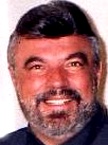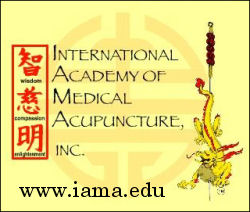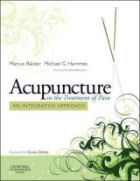Acupuncture & TCM Articles

Acupuncture Articles
by John A. Amaro L.Ac., Dipl.Ac.(NCCAOM), DC
 Dr. Amaro is an internationally known author, lecturer and practitioner beginning his practice of Acupuncture and Chiropractic in 1971. He has led 13 diplomatic Acupuncture study tours of The People's Republic of China escorting more than 500 doctors and practitioners. He has personally studied Acupuncture in nine separate Asian nations. Dr. Amaro is an internationally known author, lecturer and practitioner beginning his practice of Acupuncture and Chiropractic in 1971. He has led 13 diplomatic Acupuncture study tours of The People's Republic of China escorting more than 500 doctors and practitioners. He has personally studied Acupuncture in nine separate Asian nations.
He has received Certification in Acupuncture through the Columbia Institute of Chiropractic in 1973. This was one of the first Acupuncture postgraduate education programs for physicians in North America commencing in 1972.
He has been certified by the Waseda Acupuncture College in Tokyo, Japan in 1974 and graduated from the Chinese Medical Institute, Kowloon, China in 1976. He had previously taken postgraduate studies at the Tai Chung Medical School Taipei, China 1973.
Ultimate Low Back Pain
Acupuncture Formula
John A. Amaro L.Ac., Dipl.Ac.(NCCAOM), DC
Low back (lumbar) pain has been reported to be one of the most common conditions for which millions of sufferers worldwide seek medical attention. It has numerous causes and can never be lumped into one specific category. The same is true for treatment. There are numerous treatments available, of which chiropractic and acupuncture have reputedly demonstrated their effectiveness for the majority of low back pain syndromes. The most important item in treatment is to achieve a successful level of pain reduction, followed by correction and stabilization of the condition. Most low back pain suffers will wholeheartedly agree that pain relief is paramount, as quickly as possible.
In my almost four decades of acupuncture and chiropractic practice, I have seen thousands of cases of low back pain that have been successfully treated. It was the very rare individual who had to be referred for surgery. However, there are some for which this may be the only viable solution. The vast majority of cases, regardless of the specific cause, have experienced significant pain relief in a very short period of time with the administration of a specialized acupuncture formula. In many cases, pain relief was considerable before chiropractic and/or physiotherapy procedures could be implemented. The procedure is by no means a cure-all for every lumbar pain syndrome, but has proven the test of time in countless cases. It does not do what chiropractic does regarding structure, nor does it do what physical therapy, soft-tissue treatment, physiotherapy, therapeutic massage and other non-invasive procedures can do to strengthen muscles, ligaments or tendons. Its primary application is for early pain relief.
As most practitioners of acupuncture are vitally aware, there are specific points on the body that are key to most low back conditions. The points SI3, BL62, BL40 (54) and to "surround the dragon" are usual points of application. It stands to reason there are many other points that may be selected for a variety of reasons and diagnosis, but as far as a general overall pain relief application, the aforementioned acupuncture points are classic. Any additional points that a practitioner has used successfully may be added to this basic formula without disrupting its effectiveness.
Approximately 90 percent of typical cases of low back pain can be predicted and expected to positively respond when one uses the three major "30" points along with the previous mentioned points. These three powerful points are known as GB30, BL30 and ST30. GB30 is directly over the sciatic nerve notch, a third of the way from the head of the femur on a line drawn from the tip of the coccyx. BL30 is two-fingers breadth (1.5 tsun) from the mid-line (GV-DU MO), bilaterally level with the fourth sacral foramen. This is level with the top of the vertical buttock crease separating the right and left gluteal areas. ST30 is precisely two tsun bilateral to CV (REN) 2, which is directly at the level of the symphysis pubes.
When one uses the additional points of CV3, KI12, CV4 and KI13, the clinical response can be potentially raised another percentage point or two. KI12 is one-half tsun bilateral to CV3, which is one tsun superior to CV2. KI13 is one-half tsun bilateral to CV4, which is one tsun superior to CV3. These four points, along with ST30, makes a total of five specific points on the lower abdomen. Most practitioners and patients alike will find these points unusual, as the pain is in the back. However, its polar opposite effects and the fact that the lower Kidney meridian is the direct opposite of the huo tuo jia ji points on the back make them some of the most powerful points for low back pain.
In essence, the ultimate low back pain acupuncture formula for general pain relief, anti-inflammatory effects, increased blood flow and relaxed supporting muscles is: SI3, BL62, BL40 (54), ST30, BL30, ST30, CV3, KI12, CV4 and KI13, in addition to the huo tuo jia ji points in the area of involvement and local GV points with GV4 (ming men) being specific for lumbar pain. If you use this formula for low back pain, or in addition to points which have shown success in your own practice, it is the very rare patient who will not see outstanding clinical pain relief in a very short time.

Acupuncture in the
Treatment of Pain
It is imperative that other procedures such as gua sha, direct low-level laser, cold therapy and heat therapy also be used. However, these acupuncture points can lead to a successful resolve without the use of ancillary treatment.
Even though I always recommend 12 treatments in every case of lumbar pain as a trial of therapy, I fully expect to take the patient from acute pain relief to stabilization care within the first four visits. Do not become discouraged if it sometimes takes longer. However, the better you become with this procedure, the better your response.
These points are ideally treated with needles, but laser, electronic and percussive stimulation may achieve favorable response. Since half the points are on the posterior of the body and the other half are on the anterior, the patient who has all points treated on the same visit must be flipped over to accommodate both sides of the body. Needle retention is no longer than 10 minutes with either electrical or manual stimulation.
All the best for your success using this formula. Drop me a note with some of your more dramatic responses. I would love to share them in a future article. I have prepared a graphic of these points should you wish to see them on a human form for easy application. Simply send your request for the Ultimate Low Back Acupuncture Formula directly to my e-mail address. All the best in 2010, the Year of the Tiger
|
